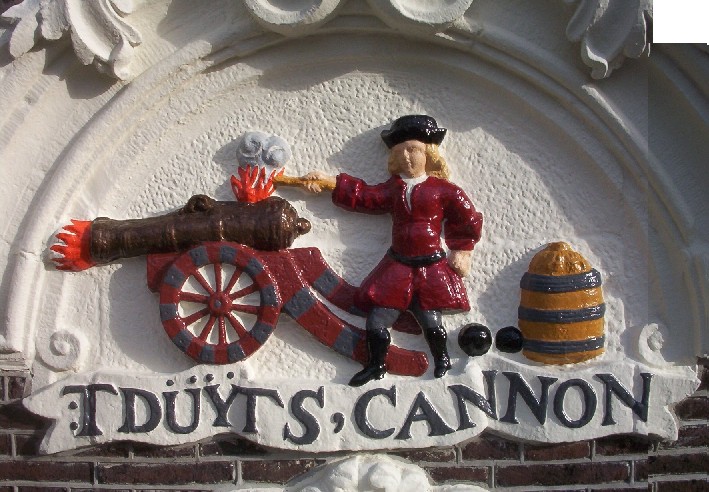 |
"een huijs end erve staend op de Londse Kaey"
|
(a house and parcel standing on the London quay)
|
the history of Singel 77, Amsterdam
|

|
We live in a little canal house at Singel 77, Amsterdam.
We have always been puzzled by our gable stone which reads 'T DUIJTS CANNON (the German cannon), because it seems unlikely that the weapons merchant would have been working from such a little house. There is also a date 1744 in the gable, which we always have believed was too recent for the type of house.
Archival research so far has resolved these questions in a surprising manner.
-
The gable stone was originally called 'T FRANS CARTOU (the French cartow, a standard type of artillery for ships and city defenses).
-
It was made for a house in the east part of town in 1660, where the city cannoneer Alexander Coster had a house built on the new island Kattenburg, built to accommodate the navy yard and the shipyard of the VOC (Dutch East India Company).
-
Around 1711 the new owner of that house, the German sailor Pieter Mansveld, had the stone re-hacked to its present name. Maybe he didn't like French people.
-
In 1734 the famous clockmaker Anthony van Oostrom bought that house, and apparently had it altered to house his clock making shop. When he bought our house on Singel 77, in 1744, he had the gable stone transferred. That also explains the date on our gable.
-
We are still researching the history of our house, and currently have found all owners back to 1583. Professions vary from a research scientist in geometric algebra, to a whig maker, a clockmaker, a cooper, a hemp beater, a tailor, a bookseller, a plumber, a skipper, a carrier, a coffee house owner, and very many widows in between. The house existed before 1583, but further research is more difficult as the records are scant. The town records on house sales have only be preserved since 1563.
The site contains lots of documents.



